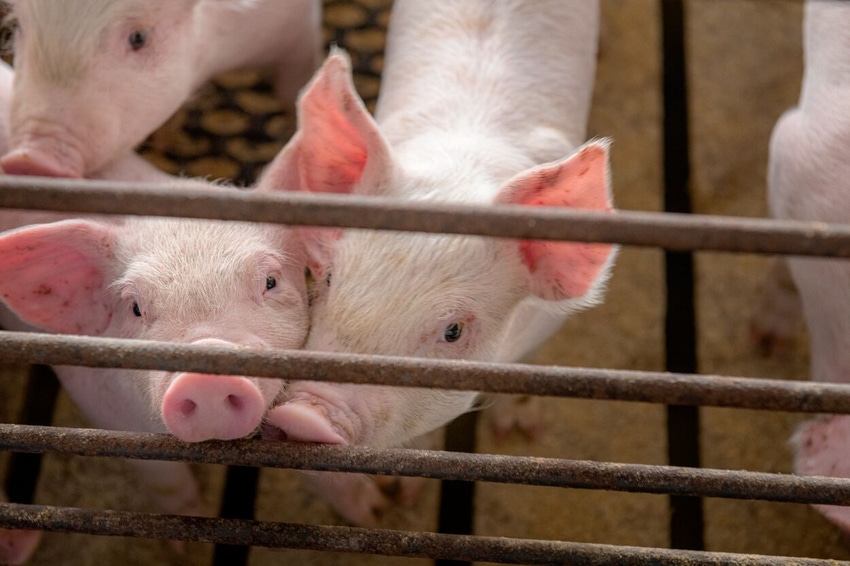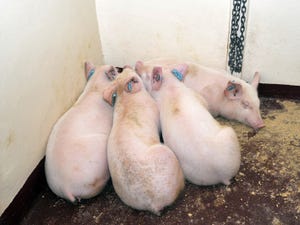Prices continue to disappoint
Not even some of the highest inflation in more than 30 years has helped boost hog prices.

It has been a disappointing year for the pork industry. Both hog and pork prices have been far lower than expected. Thus far in 2023, the base carcass price for slaughter hogs has averaged $20/cwt lower than during the same period last year.
Although the price gap is expected to narrow, USDA is projecting that this year's live hog prices will average $10/cwt ($13.33/cwt carcass) below last year.
Hog prices have been low but so has wholesale pork prices. During the first 16 weeks of 2023 the pork cutout value also averaged $20/cwt lower than the same period last year.
The poor performance in hog prices was not expected. The May lean hog futures contract started the year at $99.08/cwt. Last Friday it settled at $77.025/cwt which is $22.78 lower than at the start of 2023. August hog futures settled at $89.95/cwt last Friday, down $18.18 from the same contract at the start of January.
For all of 2022, retail pork prices averaged $4.897/pound, the third consecutive record year. Retail pork prices in March averaged $4.756 per pound, down 1.4 cents from the month before, down 8.0 cents from March 2022, and the lowest month since January 2022. It looks like the 2023 average retail pork price will be lower than last year but will still manage to be the second highest year on record.
The farm to wholesale spread (packer margin) has been dismal lately. During March it was only 59.7 cents per retail pound. This was 26.2 cents lower than a year ago and the lowest month since March 2020.
The wholesale to retail price spread (retailers' margin) was $3.213 per retail pound. This was the seventh consecutive month above $3. There have been only nine months above $3 in history.
Year-to-date hog slaughter is up 1.7% and year-to-date hog prices are down 15%. During the last eight weeks hog slaughter was up 2.17%. The March Hogs and Pigs report indicated it would be up 1.27%. During this period hog prices were down 20%. A 20% decline in hog prices for a 2% increase in hog slaughter is a much bigger drop that is normal. Typically, one would expect hog prices to decline 3-4% for each 1% increase in hog slaughter. Not even some of the highest inflation in more than 30 years has helped boost hog prices.
The above-expected slaughter has depressed prices; 51-52% lean hogs averaged only $56.38/cwt (live weight) in March. For the year of 2022, 51-52% lean hogs averaged $71.13/cwt (live weight) the highest since 2014. USDA is predicting an average 51-52% lean live hog price of $61/cwt in 2023, down 14.3% from 2022.
USDA is forecasting this year's pork production will be down 1.1% and hog prices will be down 9.3% compared to 2021. That's less pork and lower prices than two years ago.
The futures market is indicating a dollar per bushel drop in corn prices by fall. Of course, the size of any price change will be determined largely by the quality of the summer growing season.
U.S. pork exports during January and February were up 6.4% year-over-year. China, Canada and Mexico and Dominican Republic had sizeable increases in purchases of U.S. pork. Shipments to South Korea were down 9.7%. Calculated export demand for U.S. pork was down 5% but sharply lower prices stimulated increased sales.
During the same period, pork imports were down 17.4% with Mexico, Denmark, Poland and Canada each buying less.
Each month the Economics Department at Iowa State University estimates the cost of hog production and the profitability for Iowa hog farms. Iowa State University estimated the cost of production (live weight basis) in March at $73.89/cwt, the highest month since August.
They calculated losses at $30.71 per head for hogs marketed in March. That is the fifth consecutive monthly loss. These five months saw combined losses of $130.76. That is the worst bottom line since 2013.
Barrow and gilt dressed weights are lighter than last year. The likely reason for the decline in weights is low hog prices and red ink. When producers are losing money they often respond by selling hogs sooner and lighter.
About the Author(s)
You May Also Like





